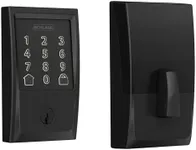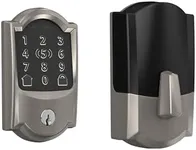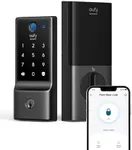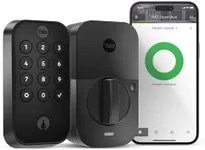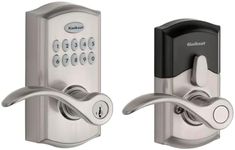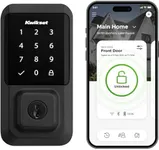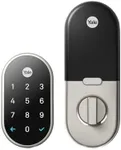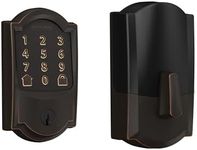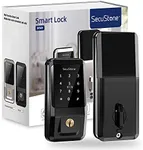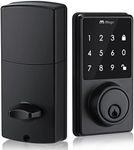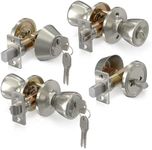Buying Guide for the Best By Smart Locks
Smart locks are a great way to enhance the security and convenience of your home. They allow you to lock and unlock your door using a smartphone, keypad, or even voice commands. When choosing a smart lock, it's important to consider various features and specifications to ensure you get the best fit for your needs. Here are some key specs to look out for and how to navigate them.ConnectivityConnectivity refers to how the smart lock communicates with your devices. Common options include Bluetooth, Wi-Fi, and Z-Wave. Bluetooth is great for short-range control and is often more secure, but it requires you to be close to the lock. Wi-Fi allows for remote access from anywhere, but it can be more vulnerable to hacking and may require more power. Z-Wave is a good option if you have a smart home hub, offering a balance between range and security. Choose based on whether you need remote access or are comfortable with local control.
Power SourceSmart locks can be powered by batteries or hardwired into your home's electrical system. Battery-powered locks are easier to install and don't require any wiring, but you'll need to replace the batteries periodically. Hardwired locks offer a more permanent solution and don't require battery changes, but installation can be more complex. Consider how often you're willing to change batteries and whether you're comfortable with a more involved installation process.
CompatibilityCompatibility refers to whether the smart lock works with your existing door hardware and smart home ecosystem. Some smart locks are designed to fit standard deadbolts, while others may require specific door types or additional hardware. Additionally, check if the lock is compatible with your smart home system, such as Amazon Alexa, Google Assistant, or Apple HomeKit. Ensure the lock you choose can integrate seamlessly with your current setup for a smoother experience.
Security FeaturesSecurity features are crucial for a smart lock. Look for features like encryption, two-factor authentication, and tamper alerts. Encryption ensures that your data is secure, while two-factor authentication adds an extra layer of security by requiring a second form of verification. Tamper alerts notify you if someone tries to break into your lock. Choose a lock with robust security features to protect your home from unauthorized access.
Ease of InstallationEase of installation is important, especially if you're planning to install the lock yourself. Some smart locks are designed for easy DIY installation, with clear instructions and minimal tools required. Others may require professional installation, especially if they need to be hardwired. Consider your comfort level with DIY projects and whether you're willing to hire a professional if needed.
User Access OptionsUser access options refer to the different ways you can unlock the smart lock. Common options include keypads, smartphone apps, fingerprint scanners, and traditional keys. Keypads allow you to set unique codes for different users, while smartphone apps offer convenience and remote access. Fingerprint scanners provide quick and secure access, and traditional keys offer a backup option. Choose based on your preference for convenience, security, and the number of users who need access.
Integration with Other DevicesIntegration with other devices means how well the smart lock works with other smart home devices, such as security cameras, doorbells, and alarm systems. Some smart locks can trigger other devices when the door is locked or unlocked, enhancing your home's security and automation. Check if the lock can integrate with your existing devices to create a cohesive smart home experience.

